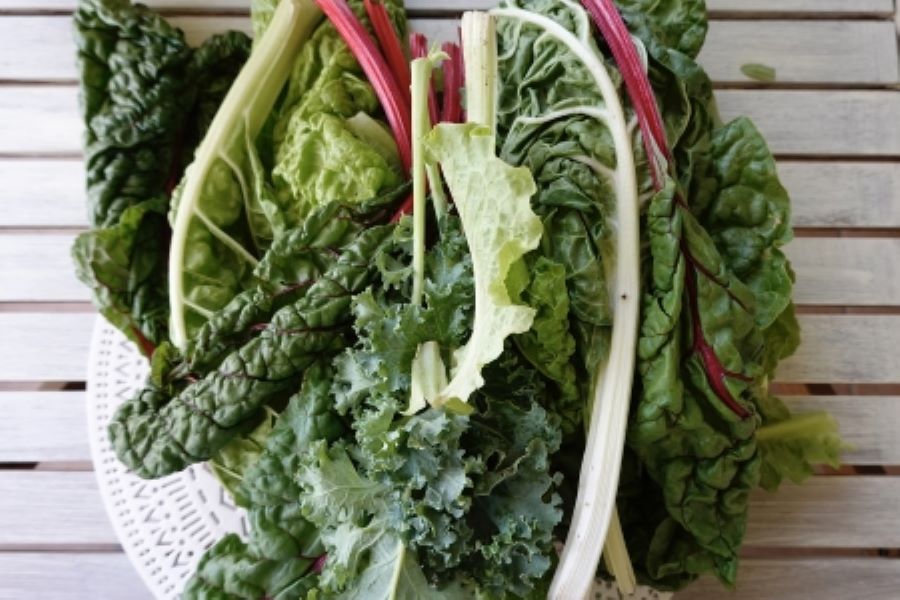Kale is a nutrient-packed, leafy green vegetable that is full of amazing health benefits! Kale is a member of the Brassica family, which also includes cabbage, broccoli, and Brussels sprouts. It is loaded with vitamins A, C, and K, as well as minerals such as potassium and folate. Kale is also a great source of dietary fiber and protein. Adding kale to your diet can help you reach your health goals, whether that’s improving your overall health or losing a few pounds. Here are the top five reasons why you should start adding kale to your diet.

Kale’s Role in Weight Loss and Management
Kale is an excellent choice for those looking to lose or manage their weight. It is low in calories, with just 33 calories per cup, and it is packed with fiber, which is known to help with weight management. Fiber helps to fill you up, so you can feel satisfied after eating a small portion. Additionally, the high levels of vitamins and minerals in kale help to keep your body running smoothly and efficiently, so you can stay energized and motivated to reach your health goals.
Kale also contains phytonutrients, which are plant compounds that have been linked to a variety of health benefits, including weight management. In addition to aiding in weight loss, phytonutrients have also been linked to reduced inflammation and improved heart health.
Kale is also a great source of protein. Protein is essential for building muscle and keeping your metabolism running smoothly, so adding kale to your diet can help you reach your weight loss goals.
How Kale Helps Keep You Healthy
Kale is packed with vitamins and minerals that help keep your body healthy. It is a great source of vitamin A, which is essential for healthy eyesight and skin. It is also rich in vitamin C, which helps to boost the immune system and keep your skin looking youthful. Kale is also a great source of vitamin K, which is important for healthy bones, and potassium, which helps to regulate your blood pressure.
Kale is also loaded with antioxidants, which are compounds that help to protect your body from oxidative damage. Antioxidants can help to reduce inflammation and protect your cells from damage. Kale is also a great source of fiber, which can help to improve digestion, reduce cholesterol levels, and keep your blood sugar levels in check.
How to Incorporate Kale Into Your Diet
Kale is a versatile vegetable that can be incorporated into a variety of dishes. It can be eaten raw in salads, or it can be cooked in a variety of ways. Kale can be sautéed, steamed, boiled, or stir-fried. It can be added to soups and stews, or it can be blended into smoothies and juices.
Kale can also be used as a substitute for other leafy greens, such as spinach or lettuce. Try adding kale to your favorite dishes for an extra boost of nutrition. Kale can also be used as a topping for pizzas and pastas, as well as a wrap for sandwiches and burritos.
Delicious Kale Recipes
Kale can be used in a variety of delicious recipes. Here are some of our favorites:
Kale and Quinoa Salad: This nutritious salad is packed with kale, quinoa, tomatoes, and feta cheese. It’s a great way to get your greens in a delicious and satisfying way.
Kale and Sweet Potato Soup: This hearty soup is full of flavor, with kale, sweet potatoes, and a variety of spices. It’s a great way to warm up on a cold winter night.
Kale and Avocado Smoothie: This creamy smoothie is packed with kale, avocado, banana, and almond milk. It’s a great way to start your day with a healthy and delicious breakfast.
Kale Pesto: This flavorful pesto is made with kale, nuts, and garlic. It’s a great way to add some flavor to your favorite dishes.
Kale Chips: These crispy chips are a great way to satisfy your snack cravings in a healthier way.
Creative Ways to Eat Kale
Kale can be used in a variety of creative ways. Try adding it to your morning smoothie for an extra boost of nutrition. You can also make kale chips by baking kale leaves with olive oil and your favorite seasonings. Kale can also be used as a wrap for sandwiches and tacos. Finally, try adding kale to your favorite pasta dishes for a nutrient-packed meal.
Tips for Buying and Storing Kale
When buying kale, look for bright, crisp leaves that are free of wilting or discoloration. Kale should be stored in an airtight container in the refrigerator, where it will stay fresh for up to five days.
The Pros and Cons of Eating Kale
Kale is a nutrient-dense vegetable that is packed with vitamins, minerals, and antioxidants. Eating kale can help to improve your overall health and aid in weight loss. However, kale does have some drawbacks. Kale is high in oxalates, which can interfere with the absorption of certain minerals, such as calcium and iron. Additionally, kale can be difficult to digest for some people, so it’s important to start slowly and increase your intake gradually.
The Power of Kale
Kale is a nutrient-packed, leafy green vegetable that is full of amazing health benefits. It is packed with vitamins and minerals, as well as antioxidants and phytonutrients. Kale is a great source of dietary fiber and protein, which can help to aid in weight loss and management. Additionally, kale is a versatile vegetable that can be used in a variety of dishes, from salads and soups to smoothies and chips. Despite its many benefits, kale does have some drawbacks, so it’s important to be mindful of your intake. However, the overall health benefits of kale make it a great addition to any healthy diet. So go ahead and give kale a try today!


